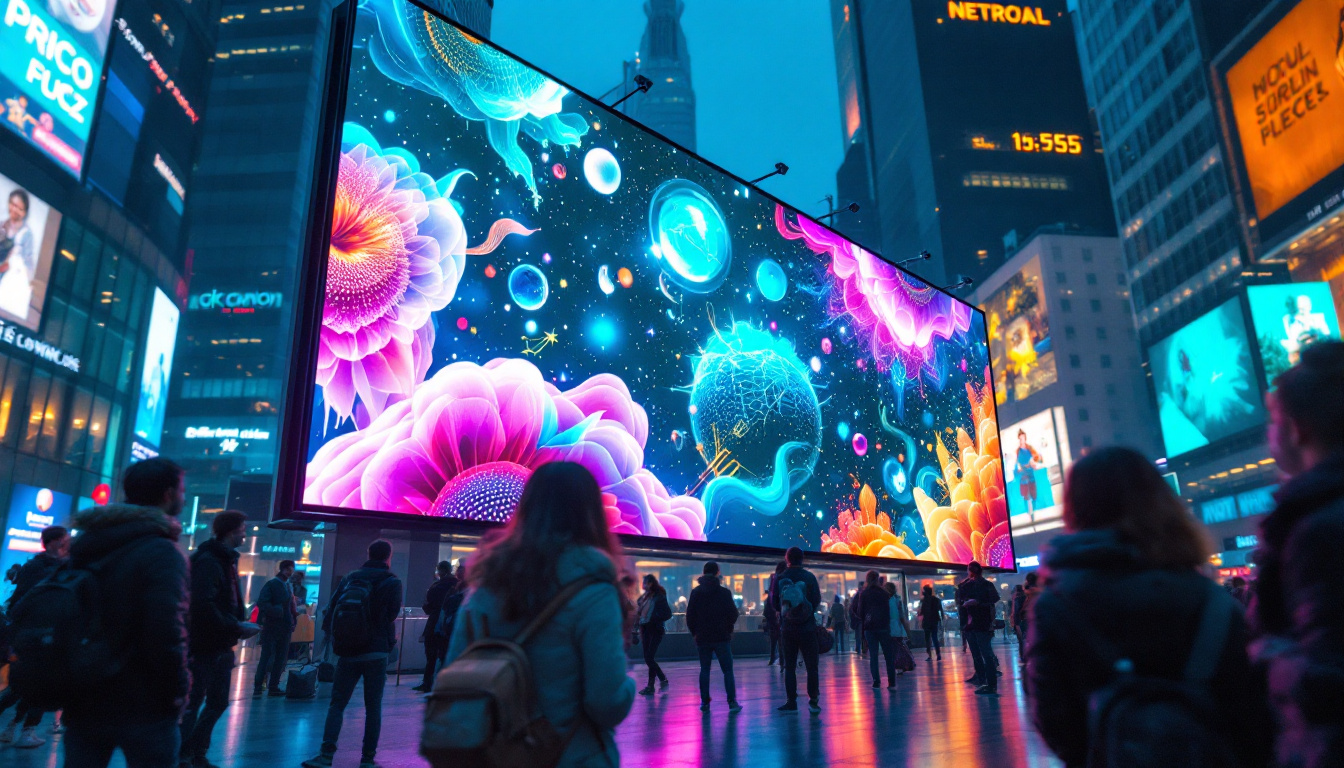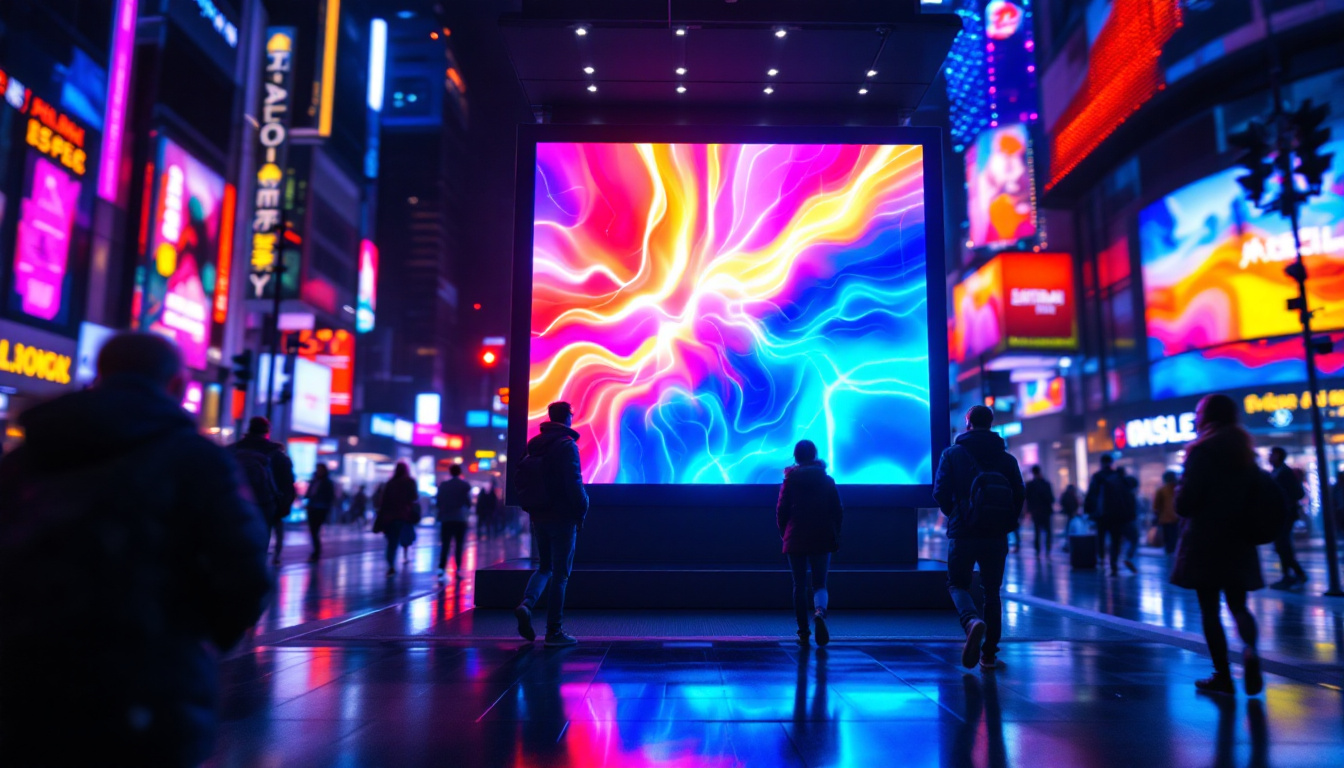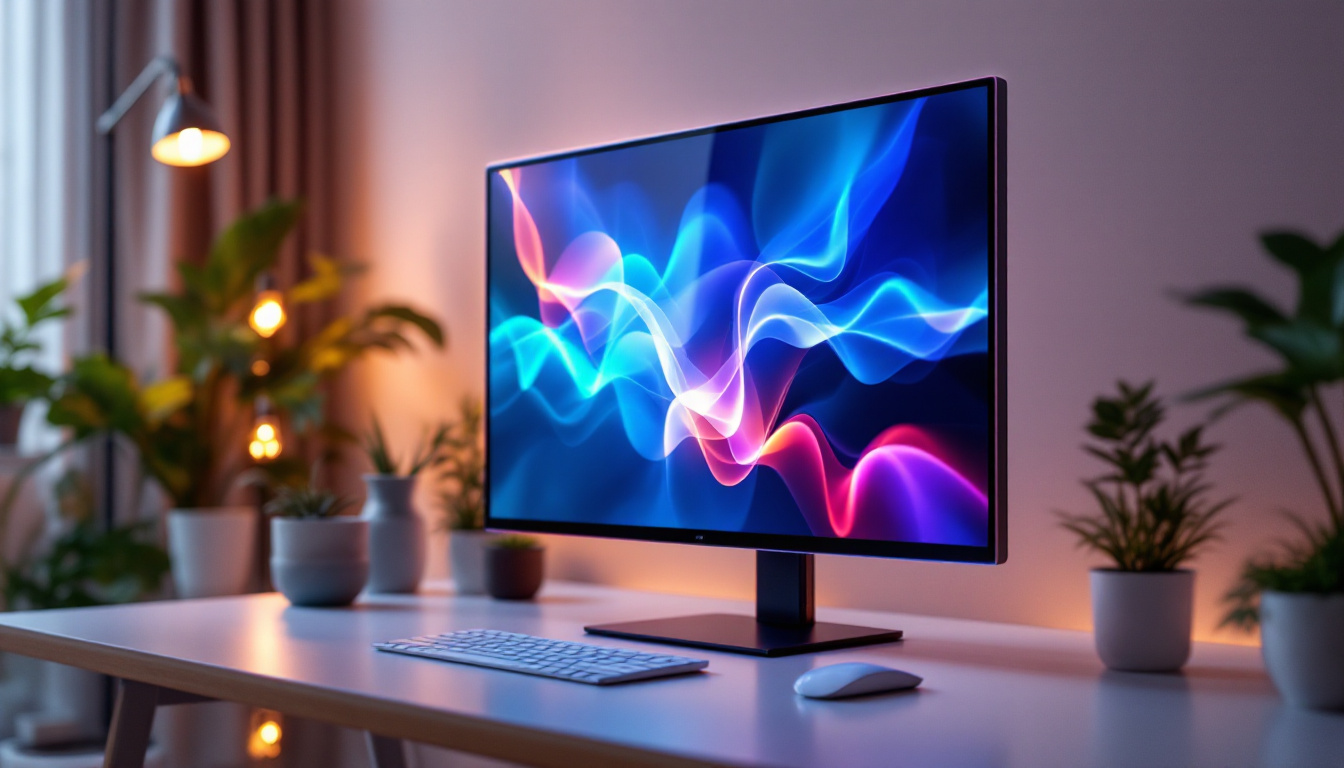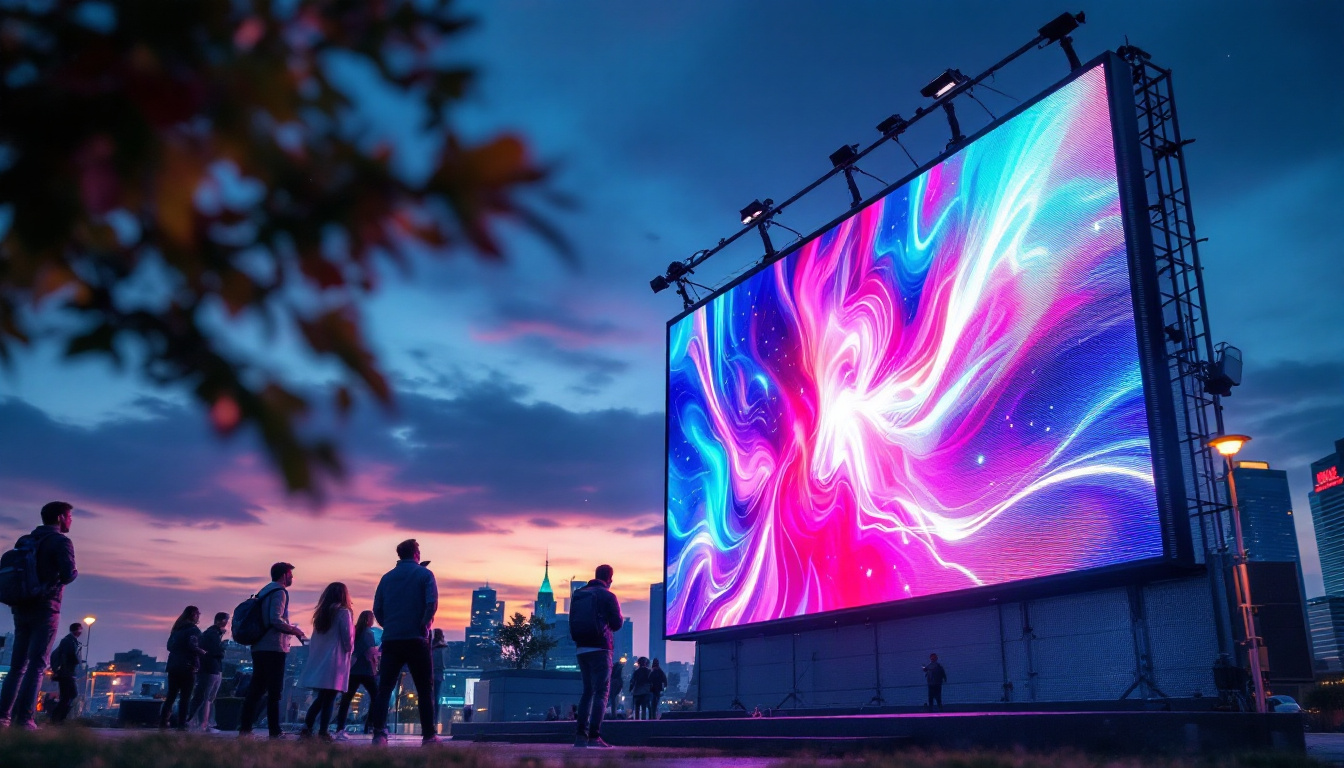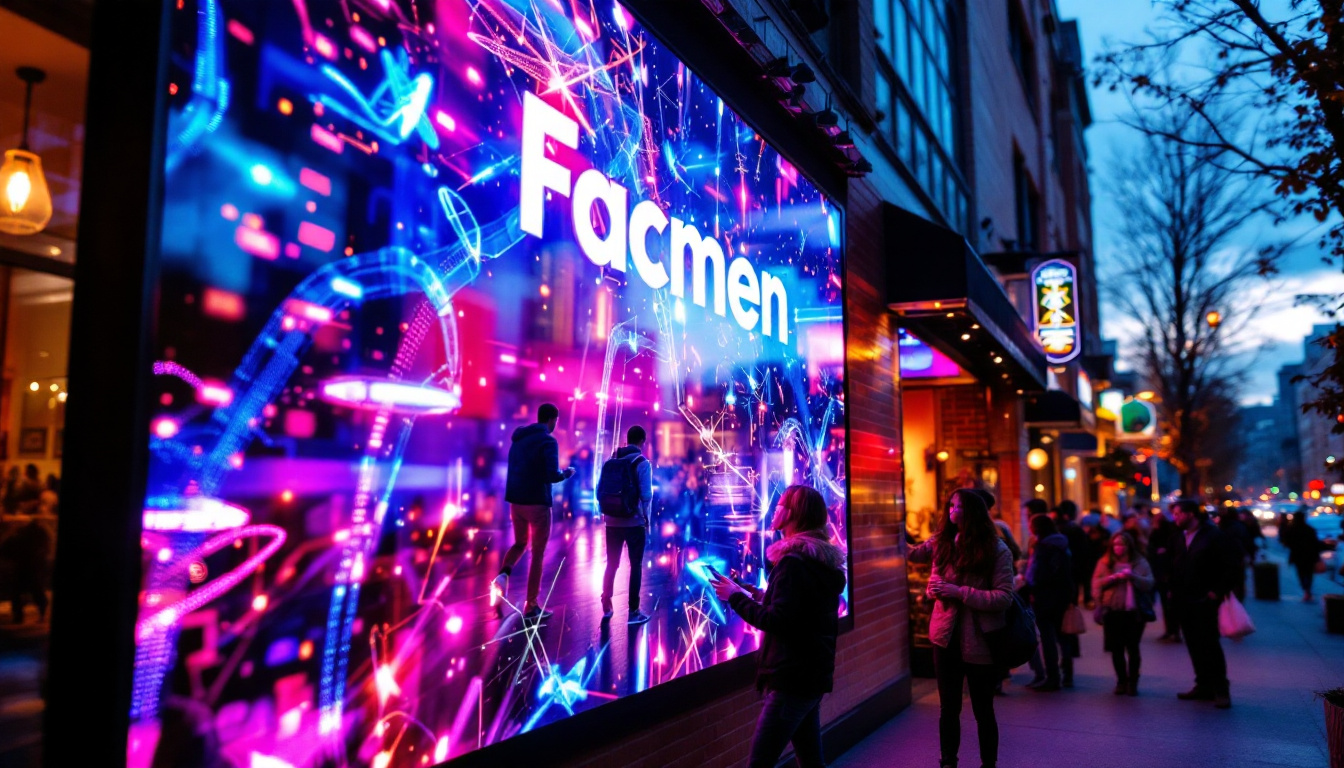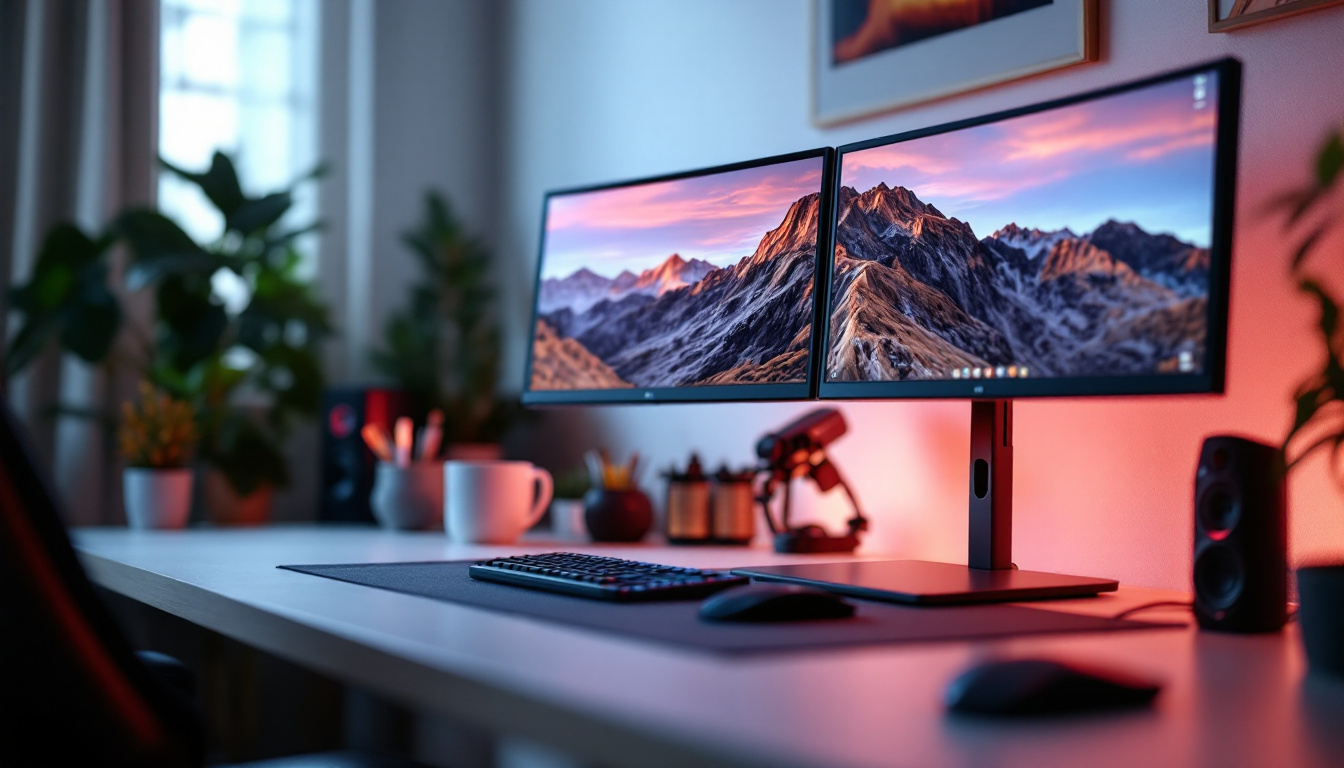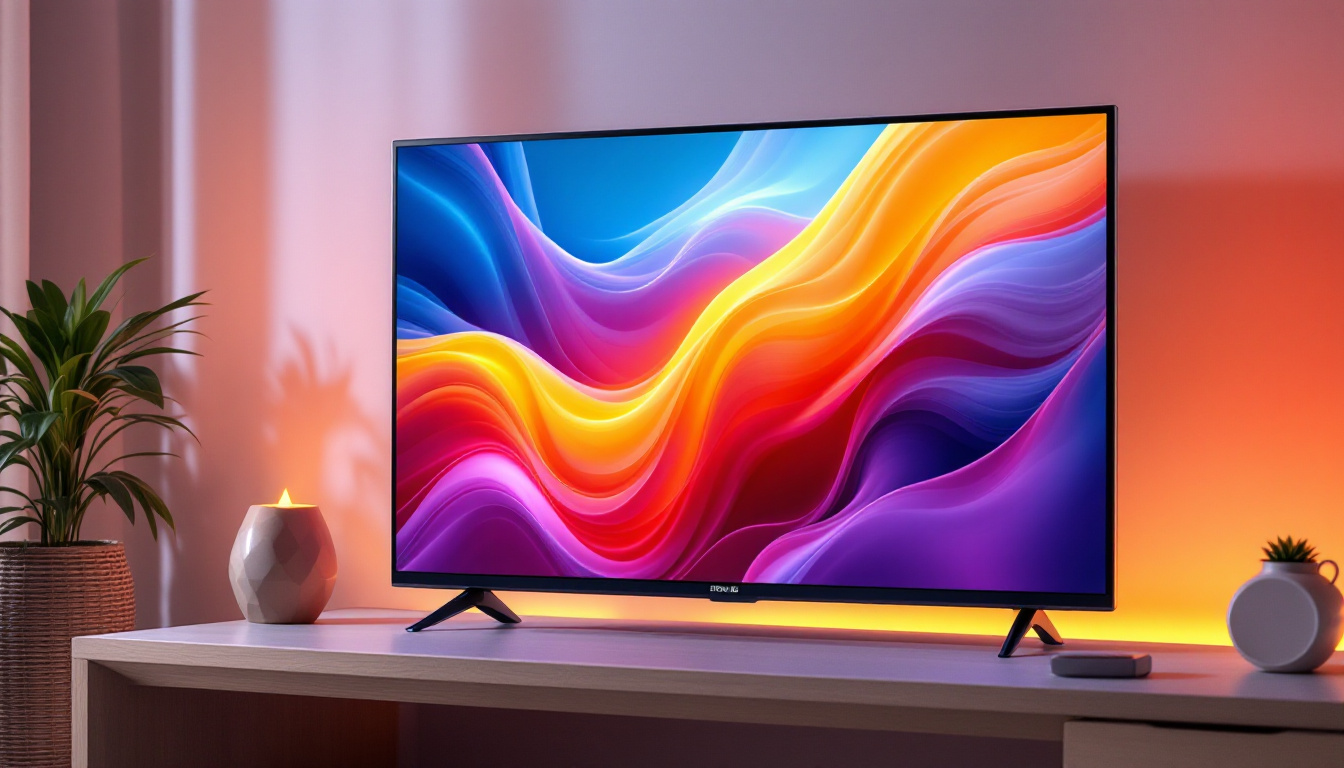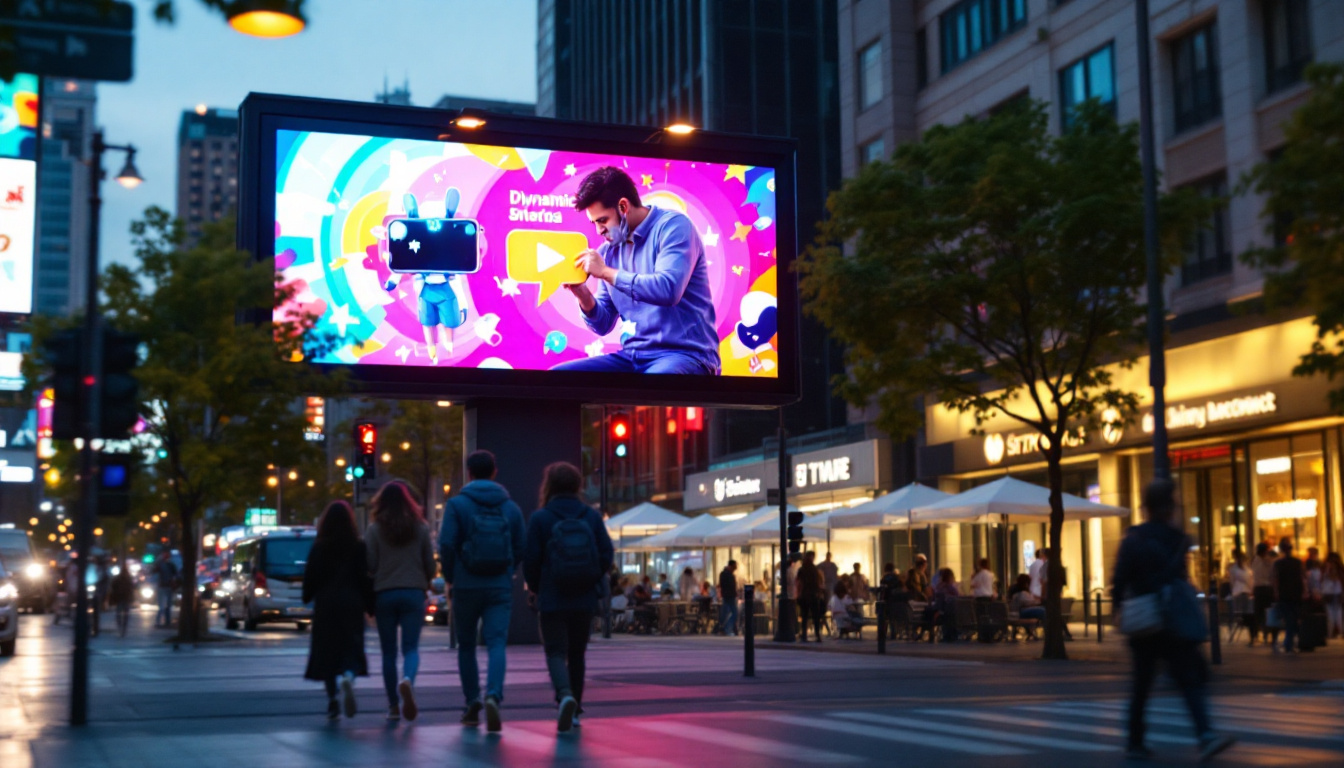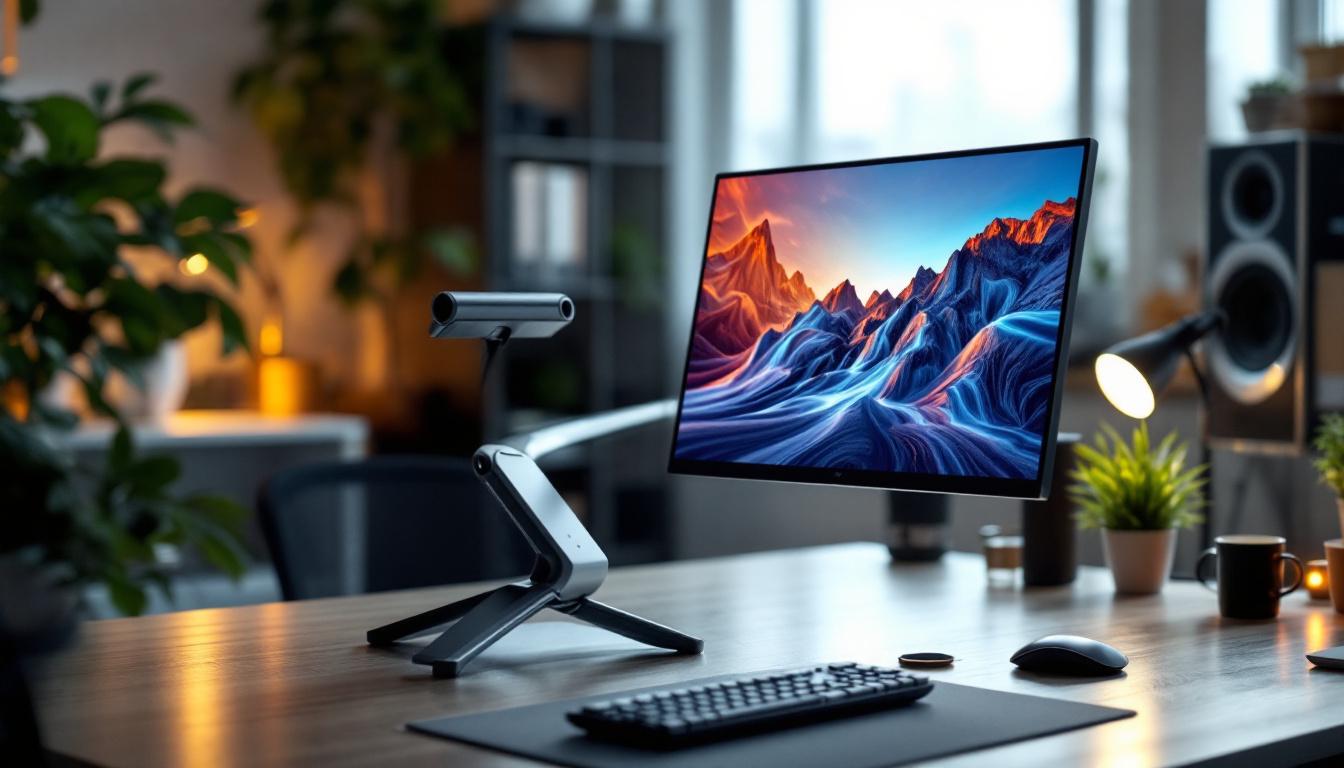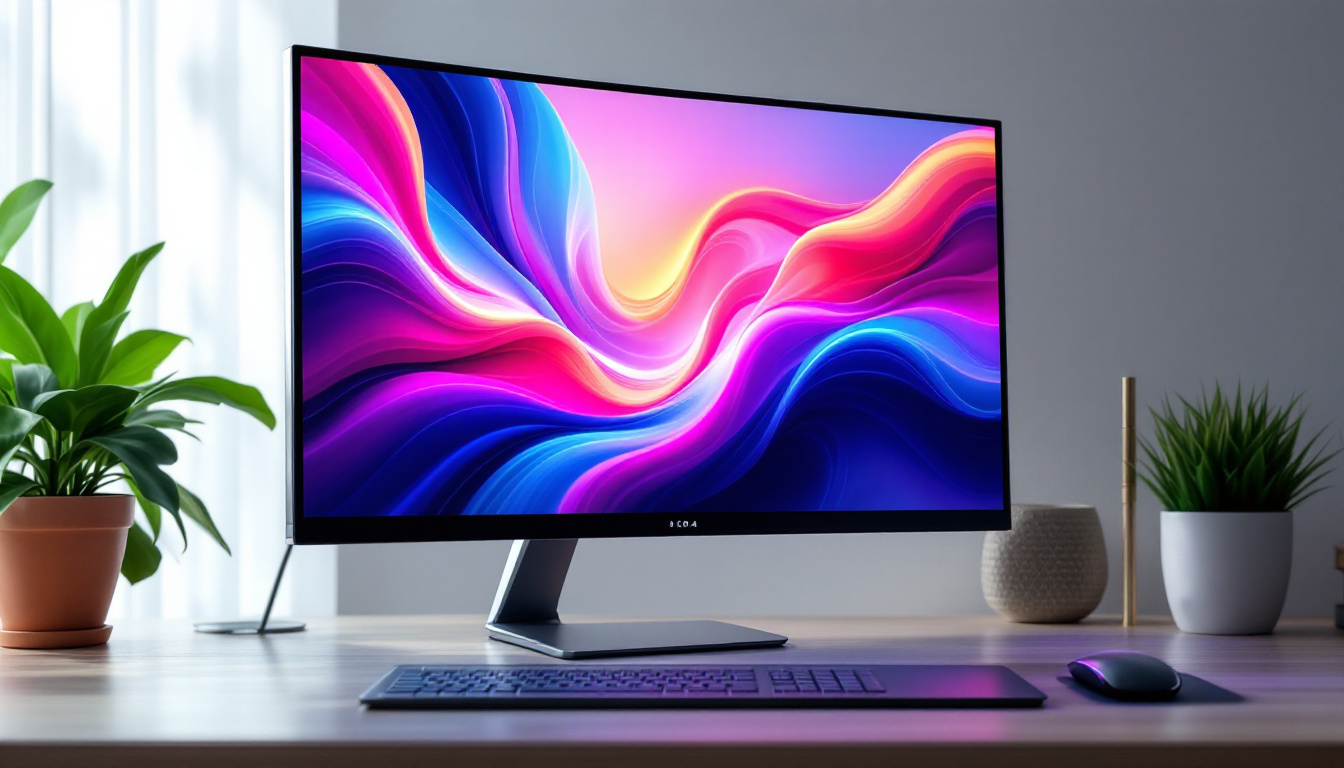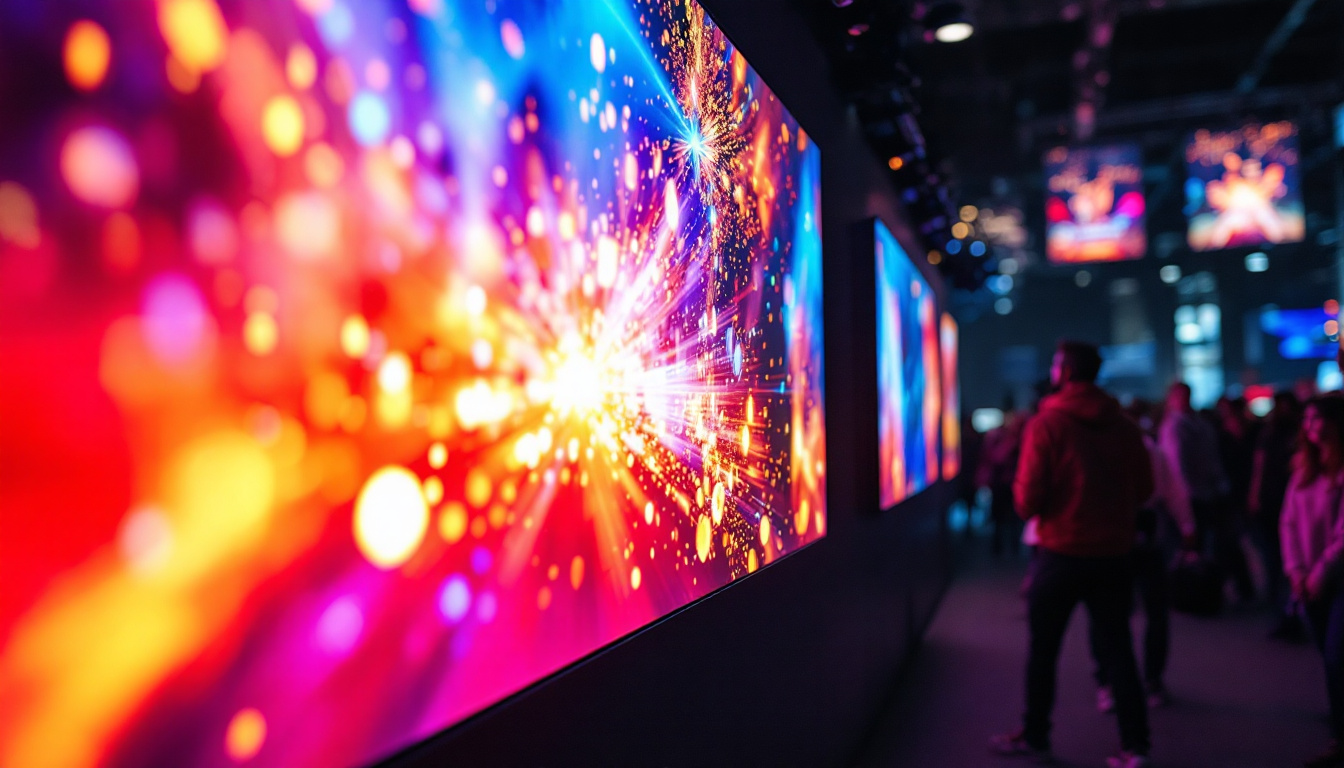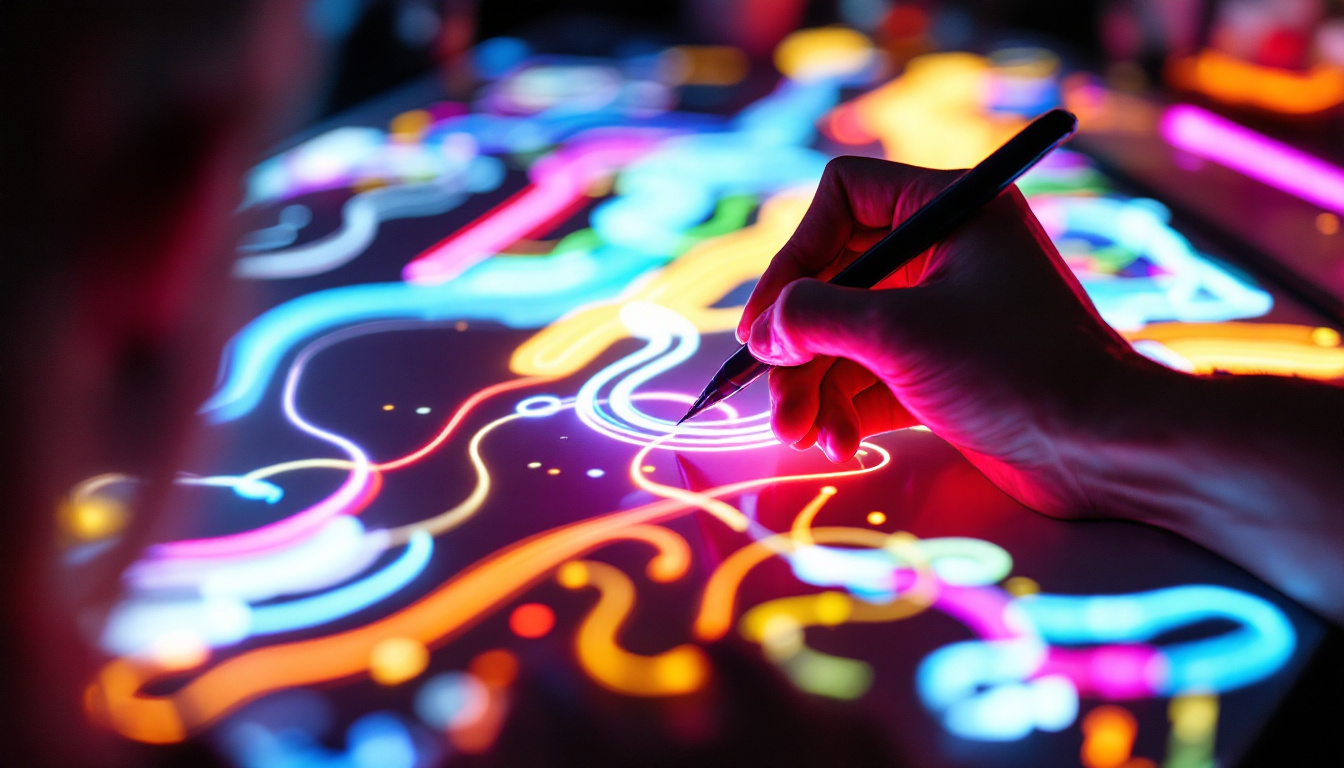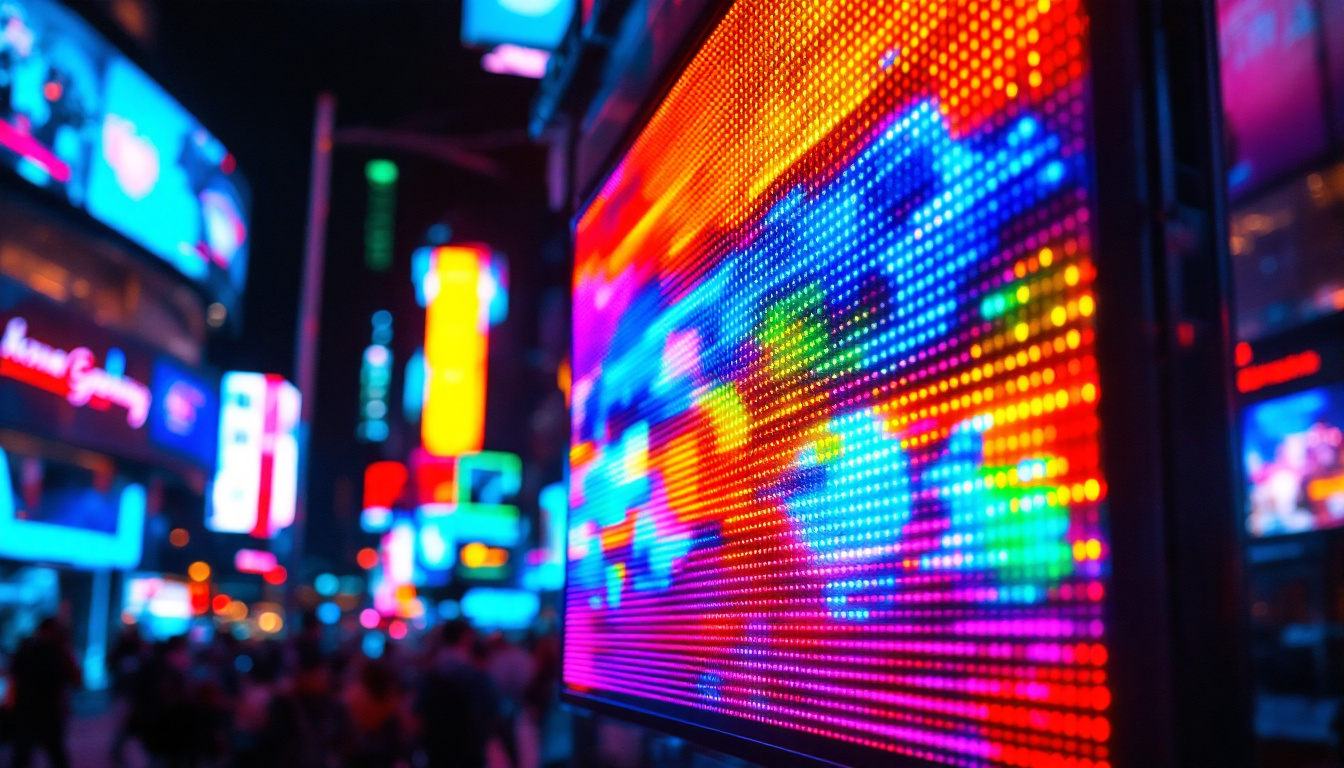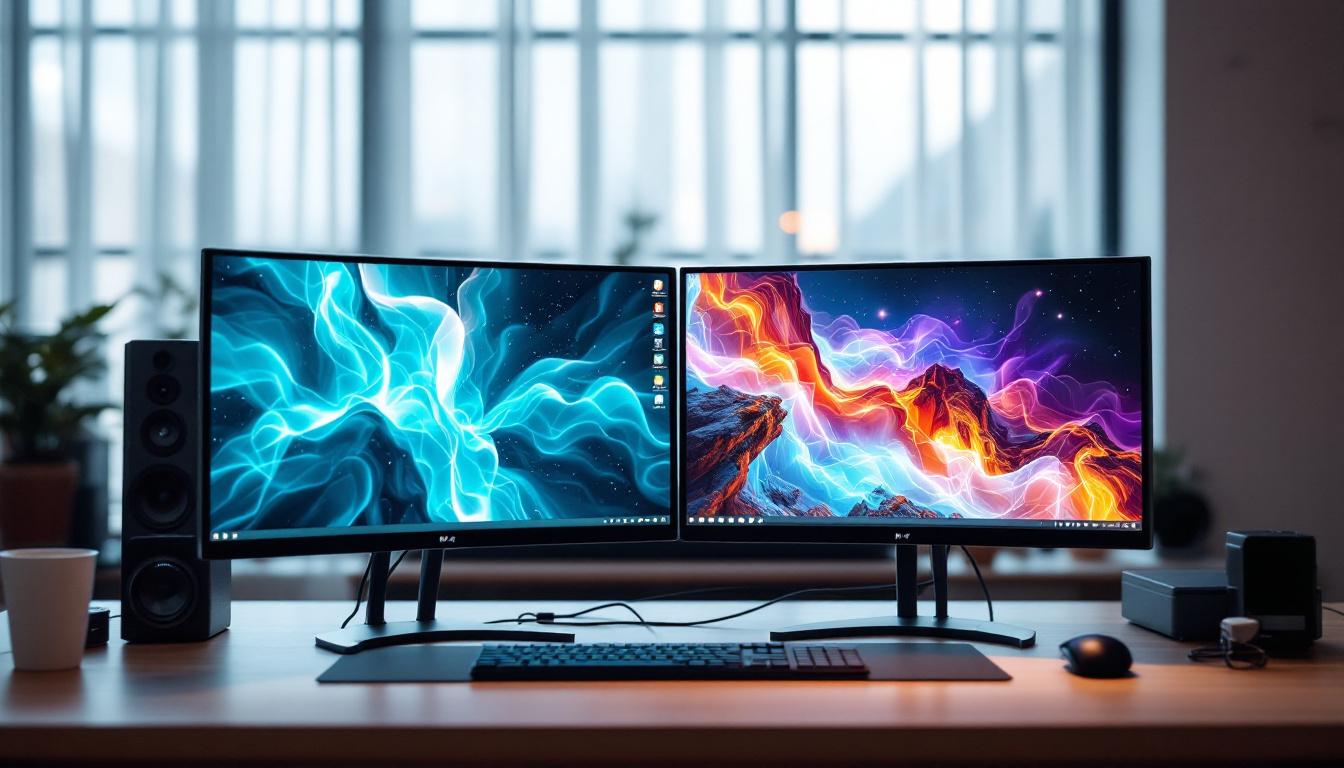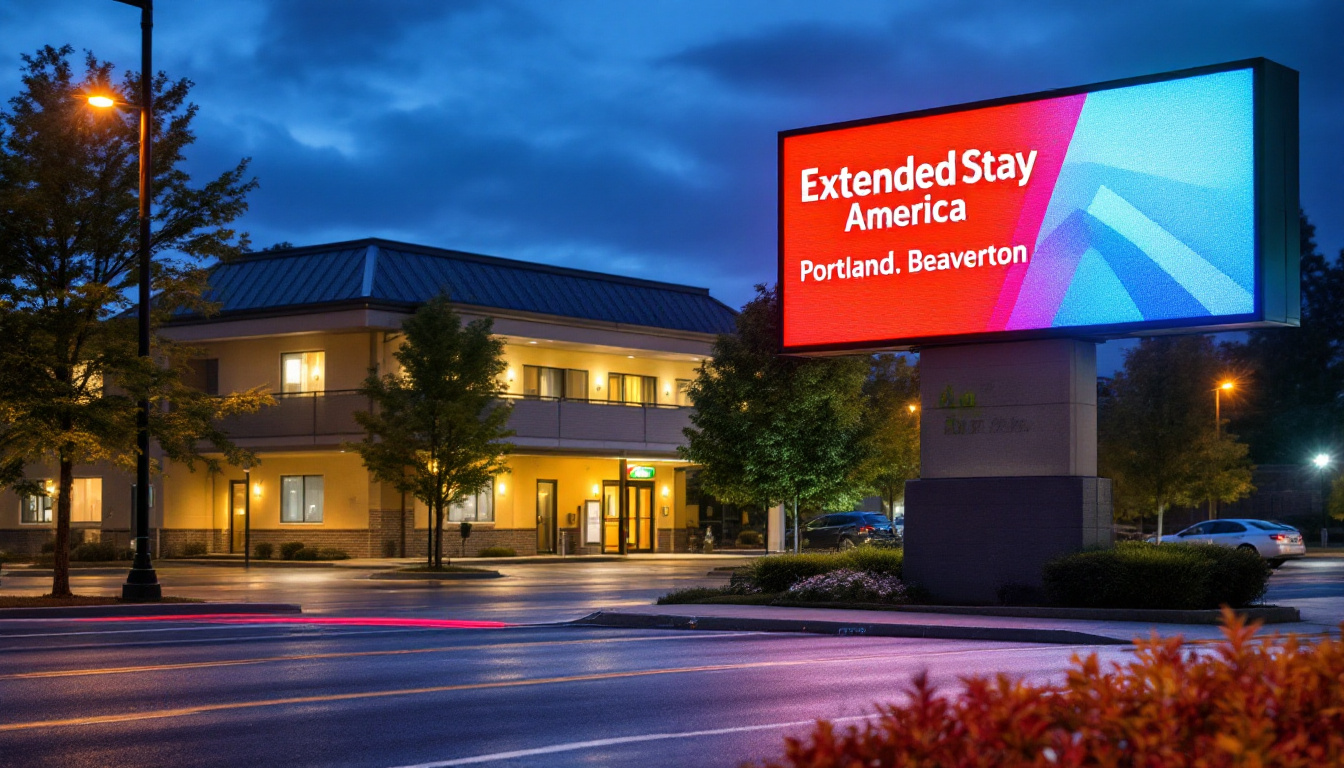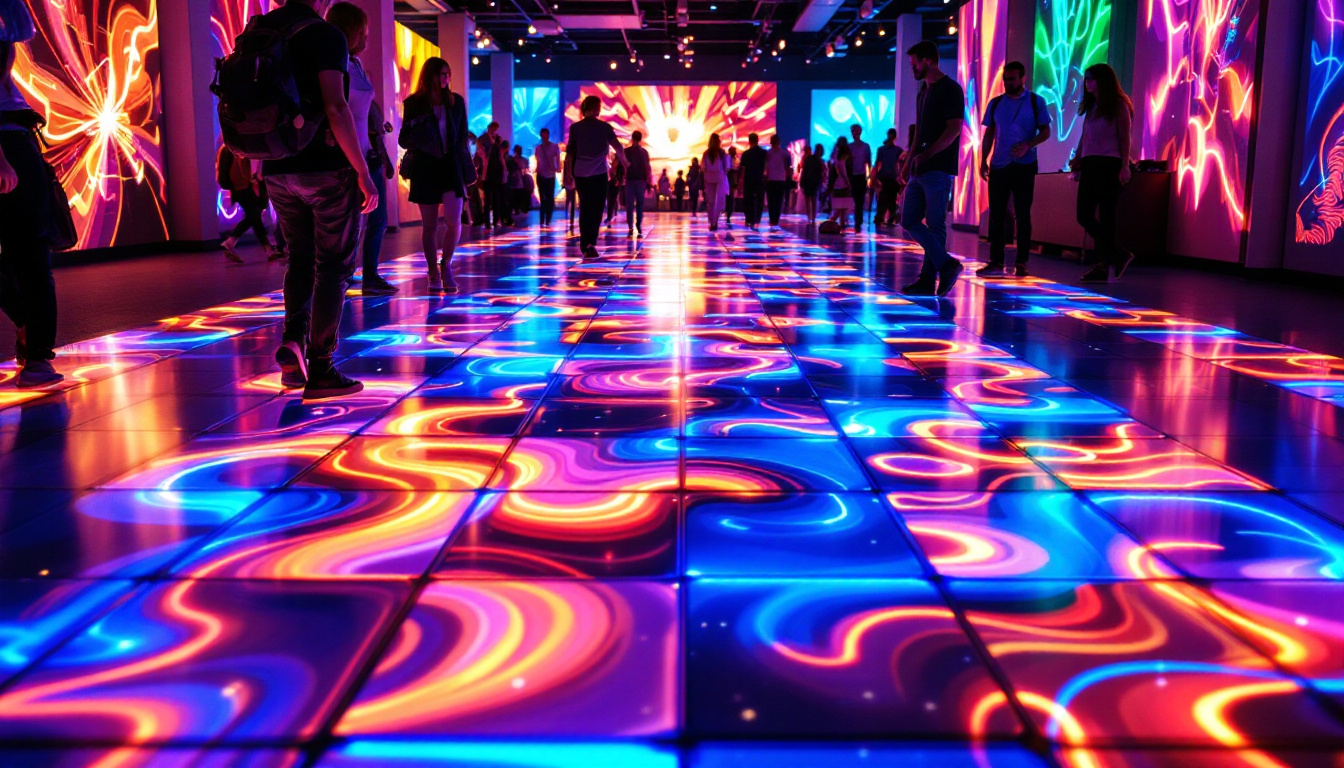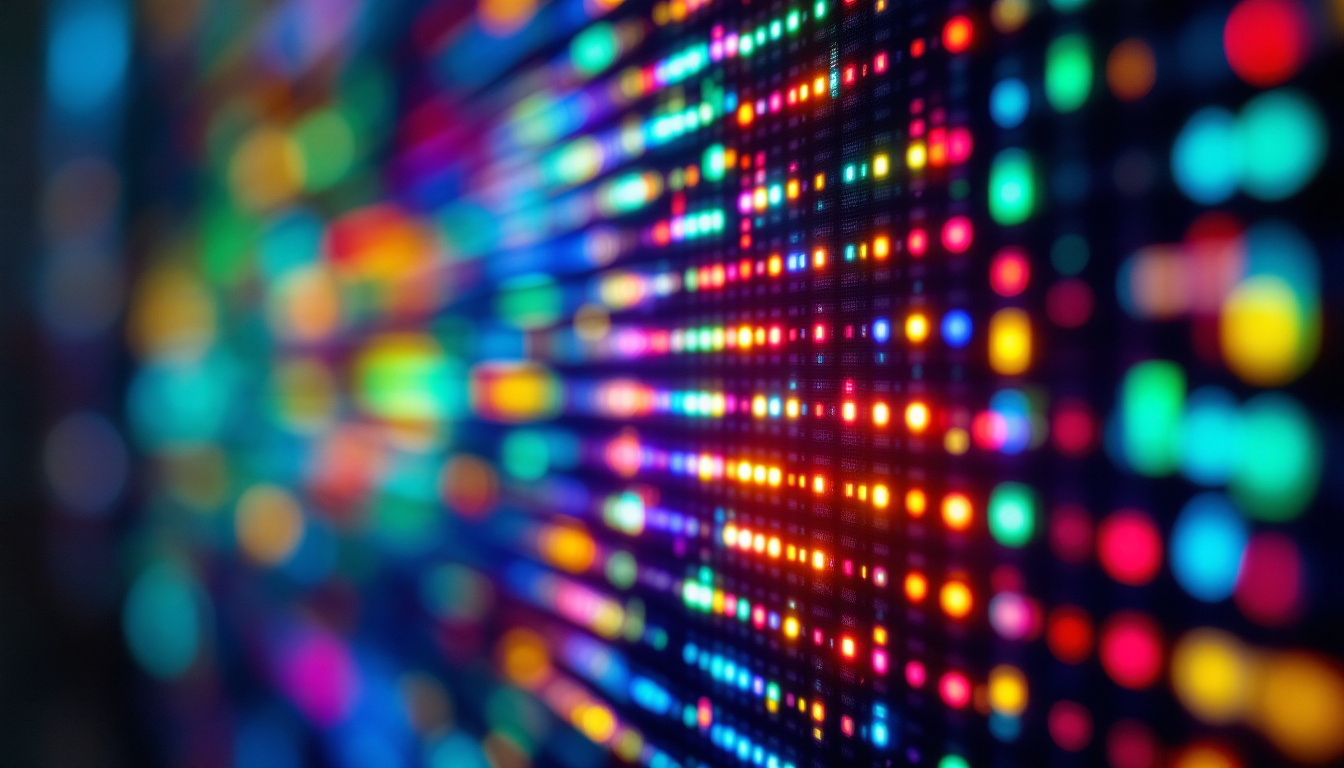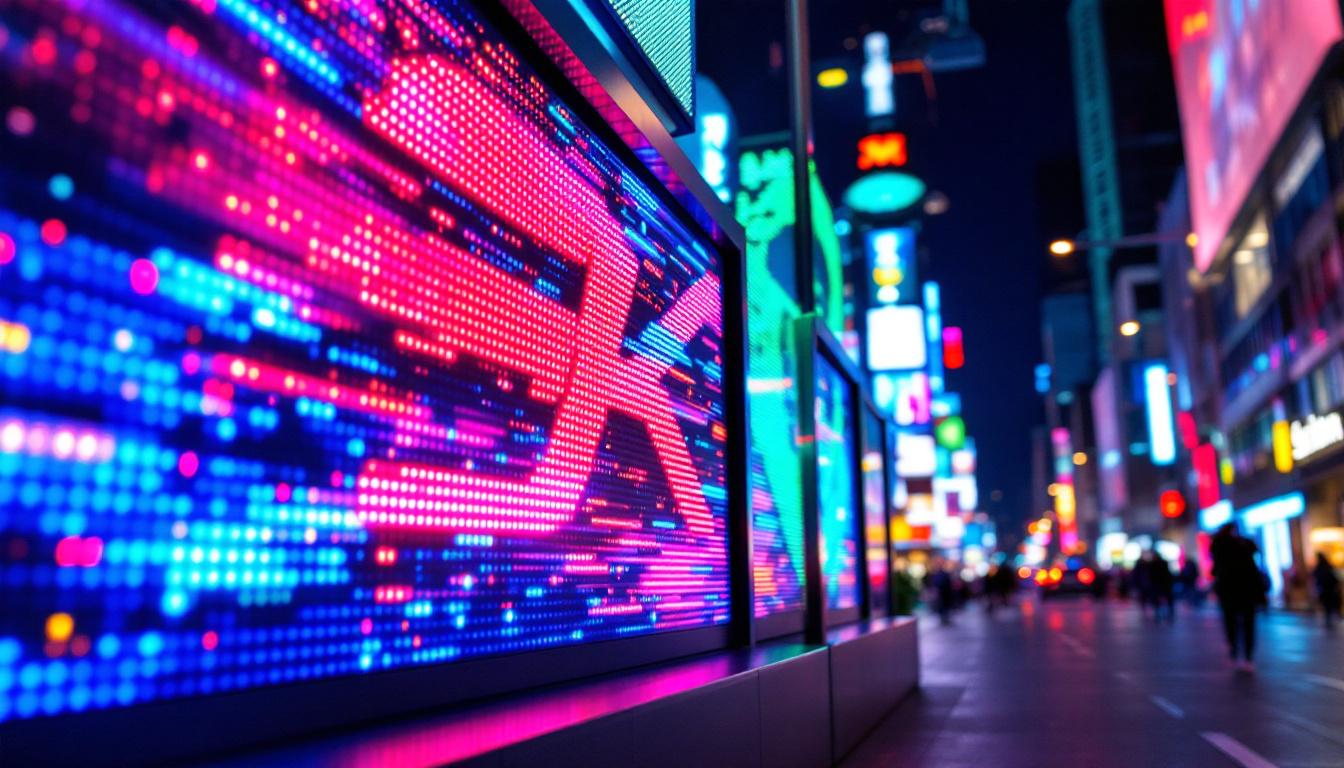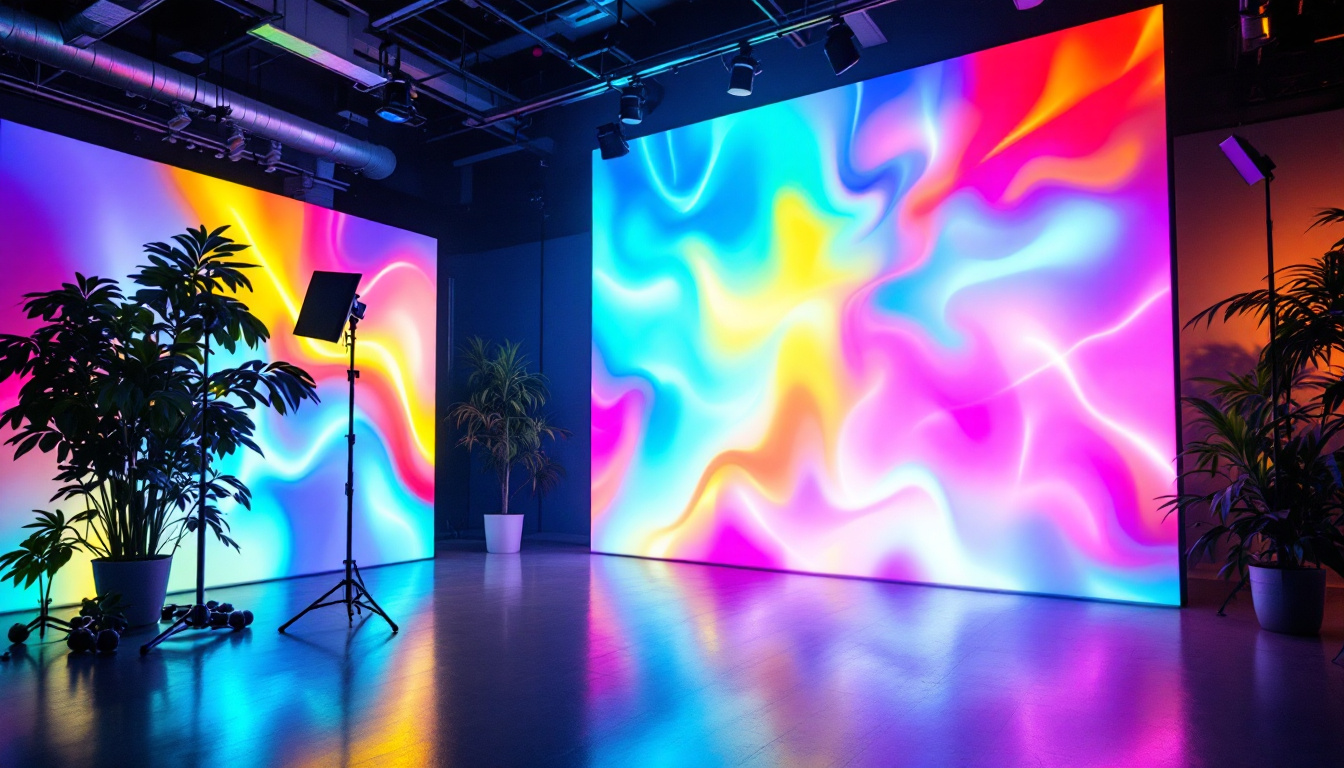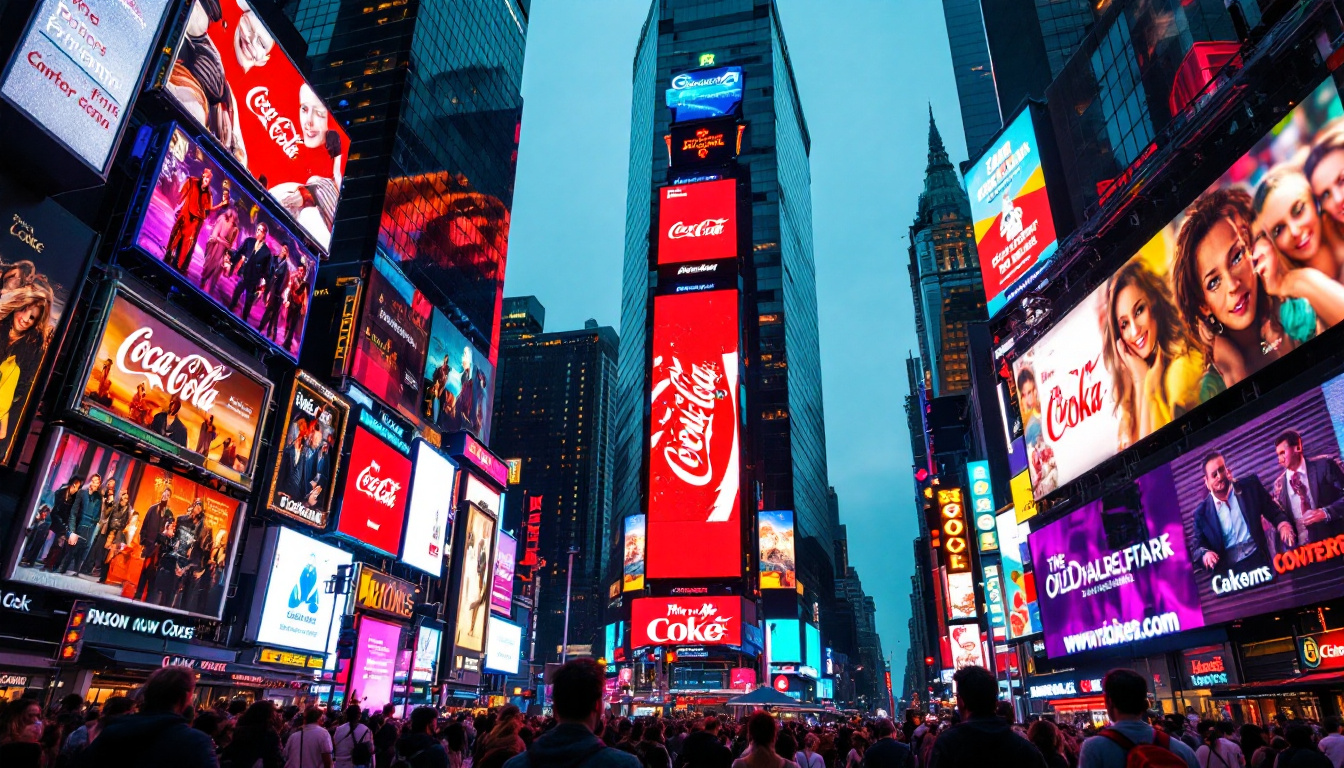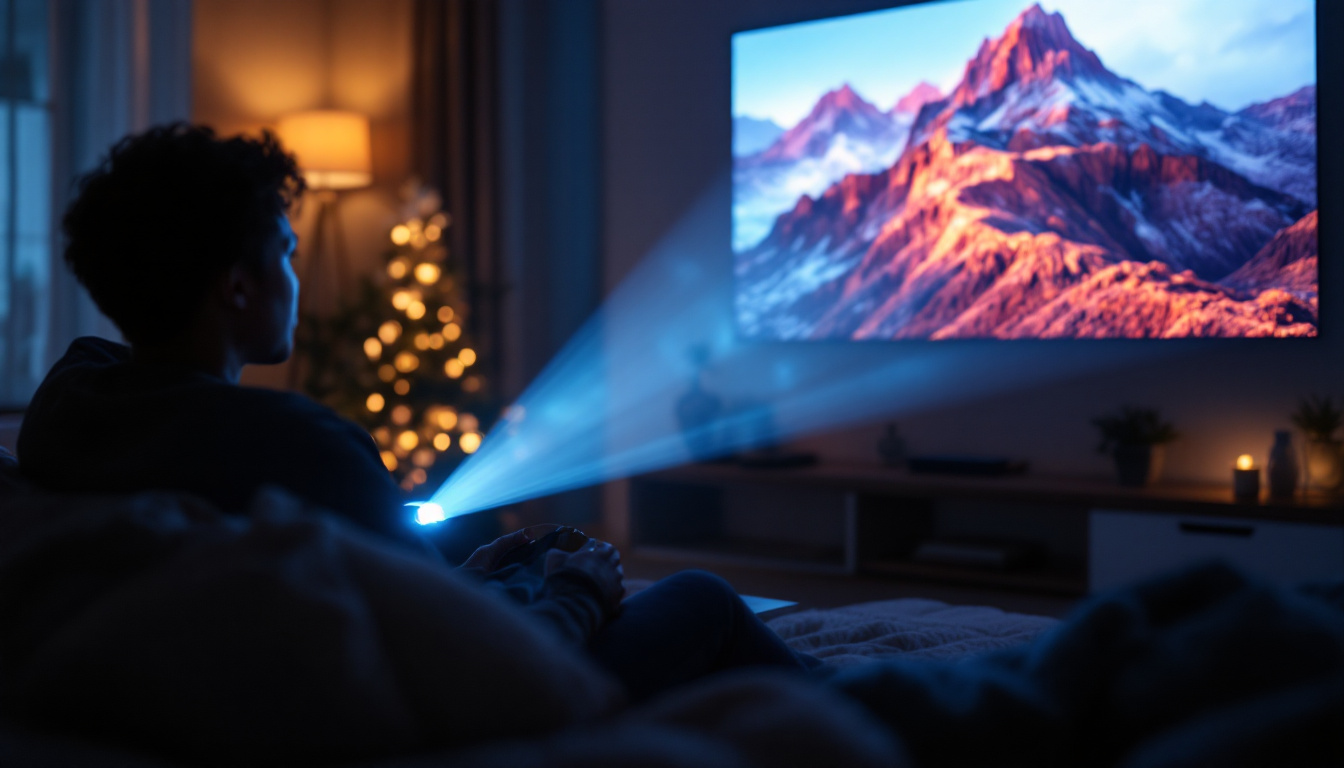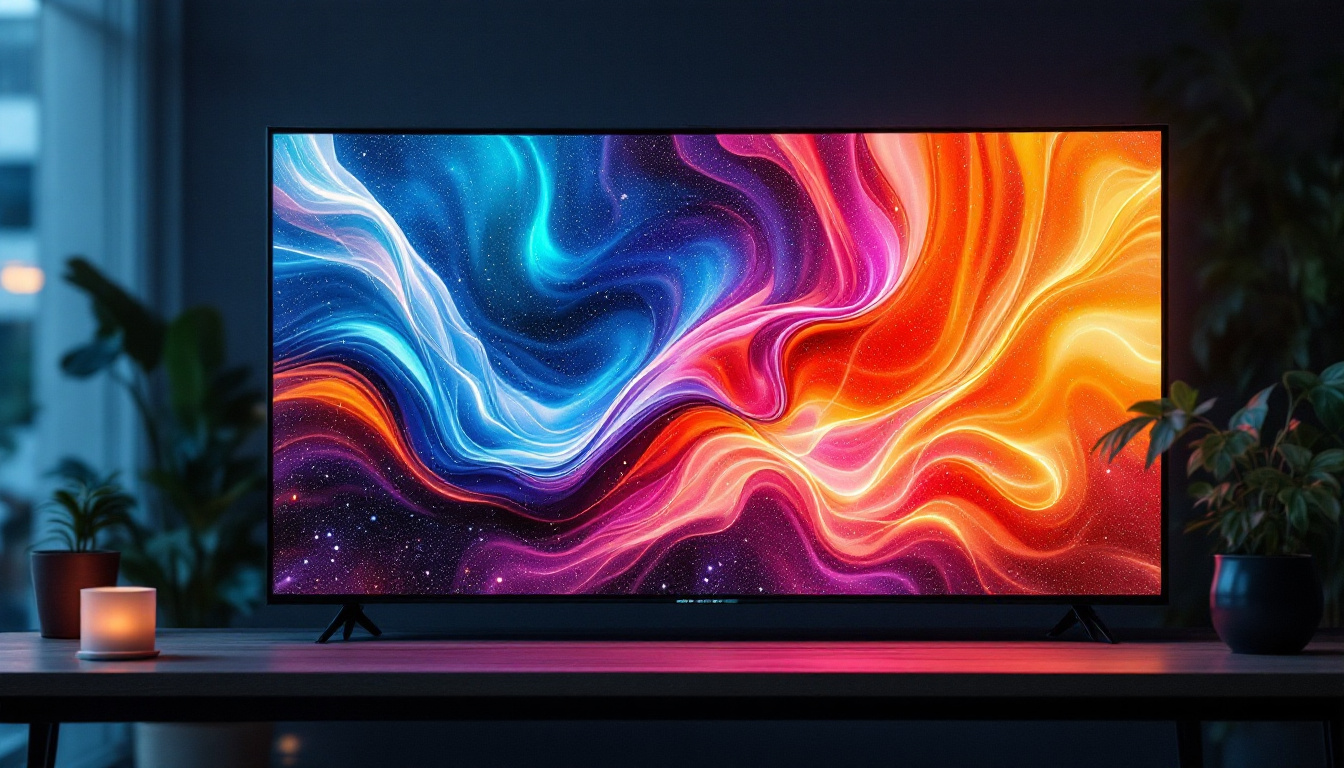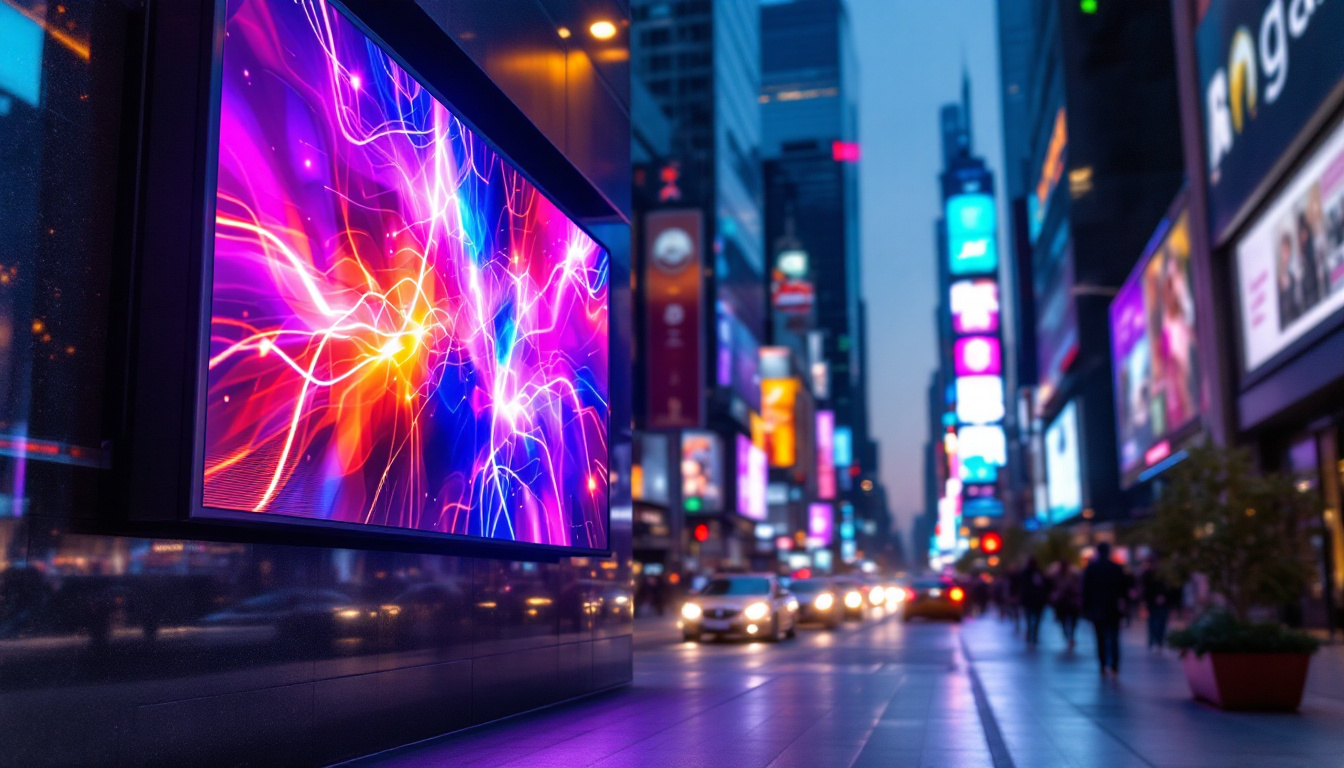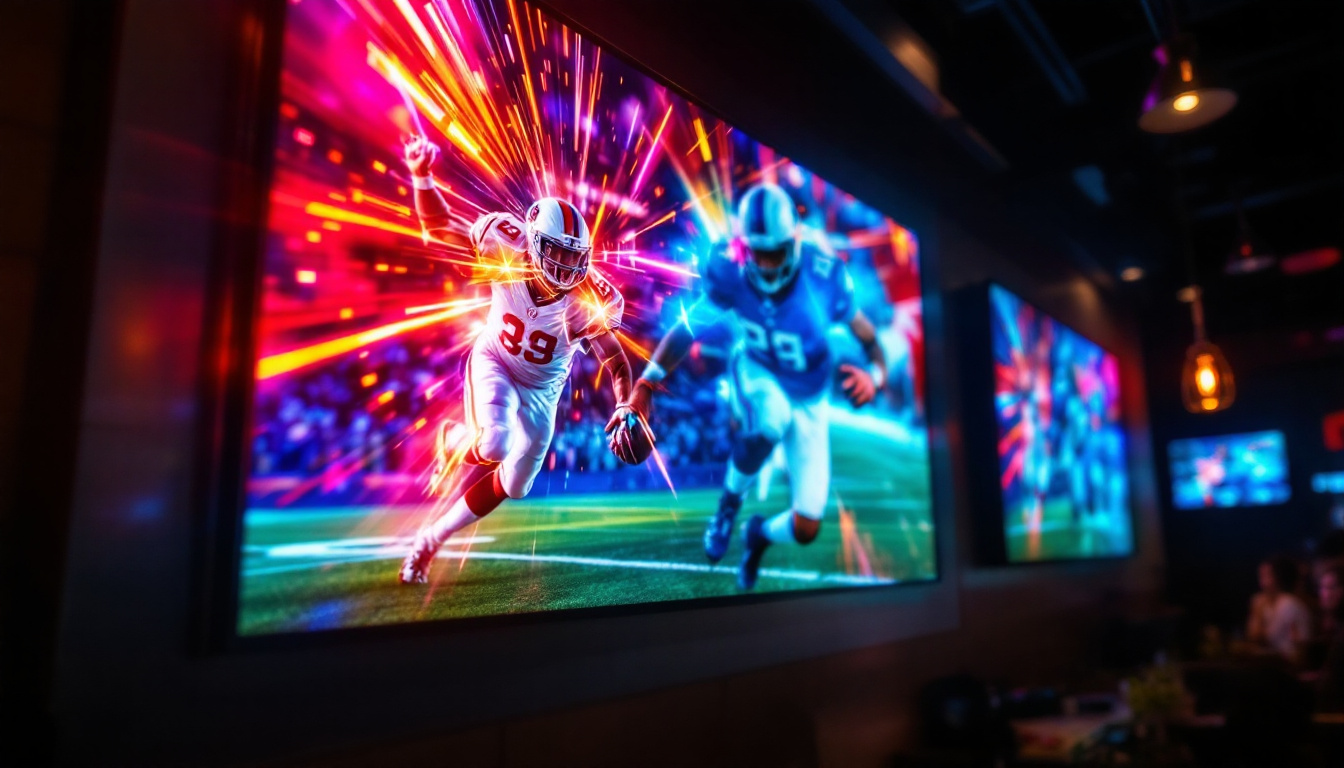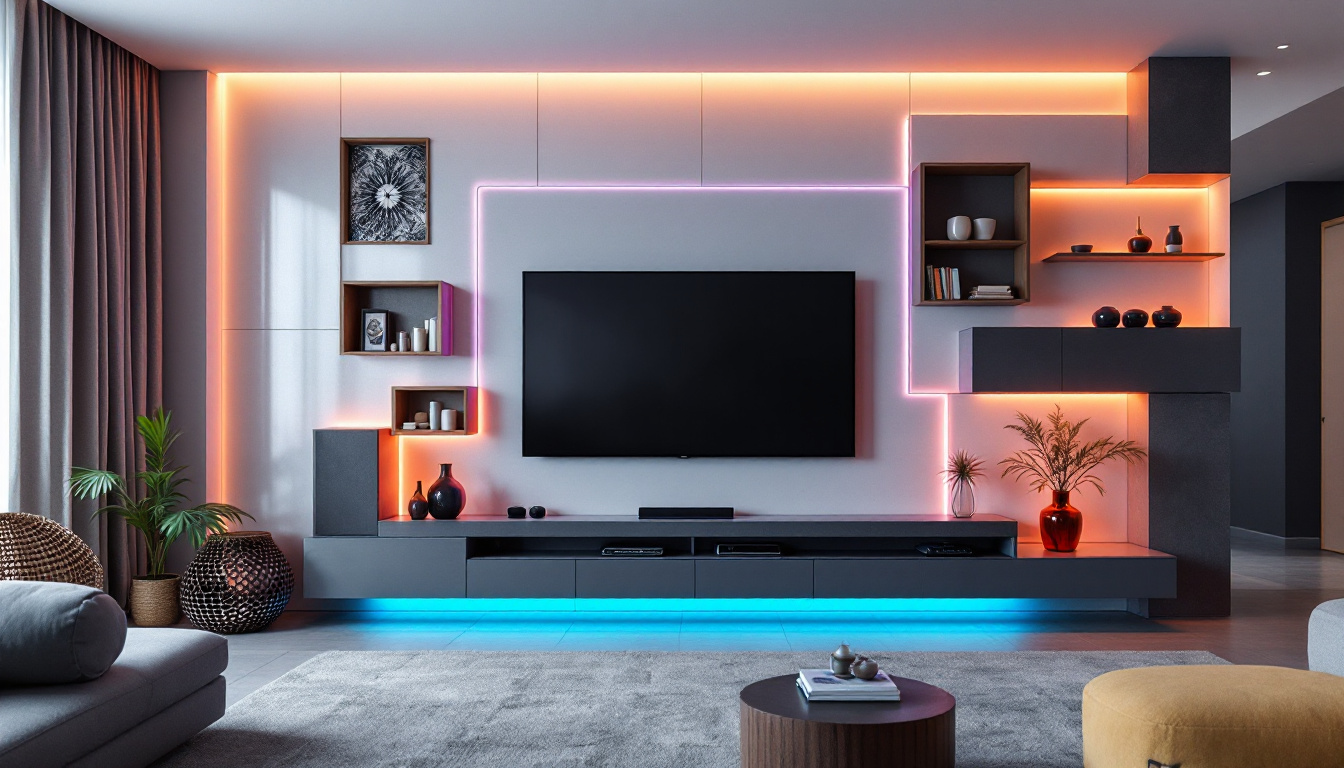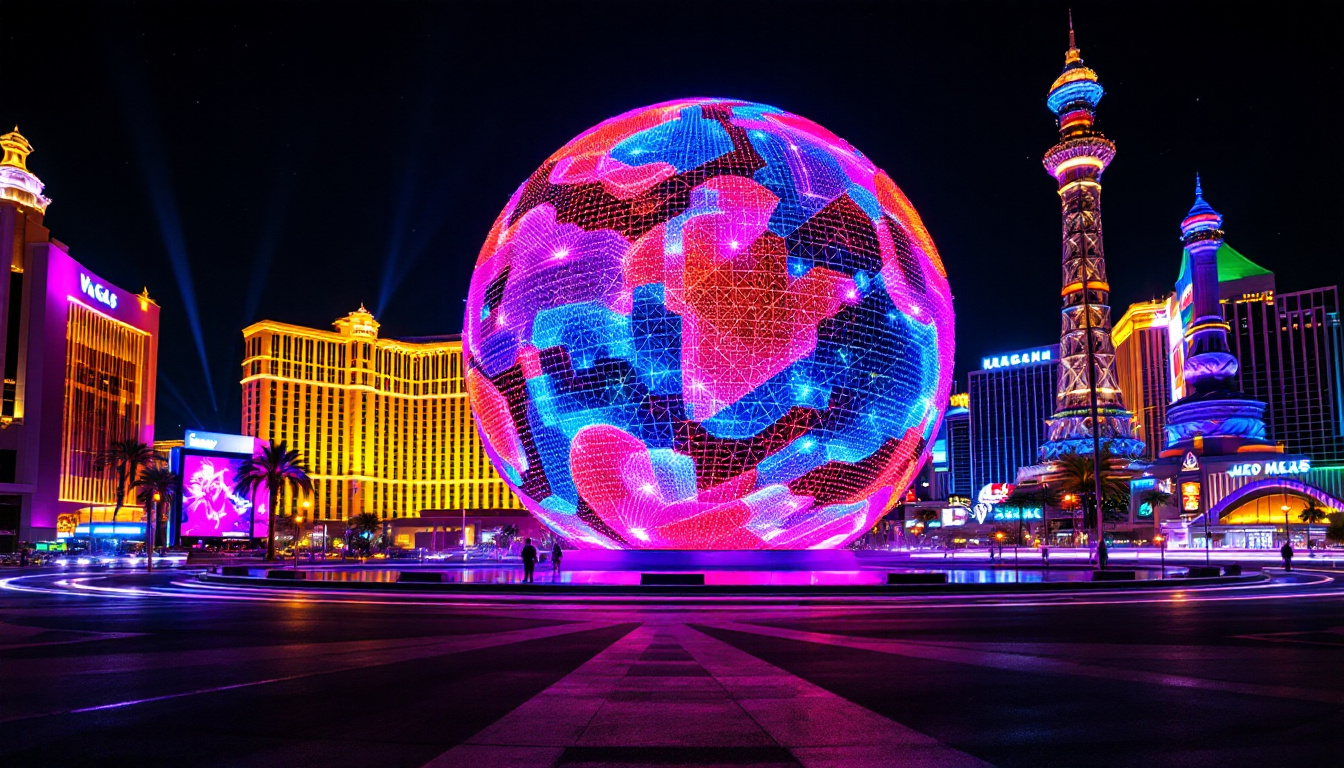In the world of modern technology, LED displays have become a crucial component in various applications, from televisions to digital signage. One of the most interesting formats that has emerged is the 21:9 aspect ratio. This article delves into what a 21:9 LED display is, its advantages, applications, and how it compares to other aspect ratios.
Understanding the 21:9 Aspect Ratio
The 21:9 aspect ratio, also known as ultra-wide, is a format that provides a wider field of view compared to the traditional 16:9 ratio. This ratio is particularly popular in cinema and gaming, as it closely resembles the dimensions used in many films.
In practical terms, a 21:9 display means that for every 21 units of width, there are 9 units of height. This results in a screen that is significantly wider than it is tall, allowing for a more immersive viewing experience. The ultra-wide format not only enhances the visual experience but also creates a sense of depth that can make scenes feel more lifelike, effectively drawing viewers into the narrative.
Comparison with Other Aspect Ratios
When comparing the 21:9 aspect ratio to the more common 16:9 and 4:3 ratios, the differences become apparent. The 16:9 ratio is widely used in television and online streaming, while the 4:3 ratio was standard in older television sets. The evolution of aspect ratios reflects the changing preferences of audiences and advancements in technology, with wider formats becoming more favored as they offer a more engaging viewing experience.
The ultra-wide format of 21:9 provides additional horizontal space, which can enhance the viewing experience, particularly for movies and video games designed to take advantage of this format. This aspect ratio allows for a more cinematic experience, drawing viewers into the action. Furthermore, many modern films are shot in this format, allowing audiences to appreciate the director’s vision as intended, with expansive landscapes and intricate details that might otherwise be lost in narrower formats.
Benefits of 21:9 Displays
One of the primary benefits of a 21:9 LED display is the immersive experience it offers. The wider screen allows for a broader field of view, making it ideal for gaming and watching films. Users can see more of the action without having to shift their gaze, which can enhance engagement. Games designed for this aspect ratio often feature enhanced graphics and gameplay mechanics that utilize the extra screen real estate, providing players with a competitive edge and a more thrilling experience.
Additionally, the 21:9 format is beneficial for multitasking. Users can easily split the screen into multiple windows, allowing for efficient workflow and productivity. This is particularly useful for professionals who need to view multiple applications simultaneously. For instance, a graphic designer can work on a project while referencing a tutorial video or a spreadsheet, all on the same screen. This seamless integration of tasks not only saves time but also reduces the need for multiple monitors, making it a space-efficient solution for modern workspaces. Moreover, the ultra-wide format is increasingly being adopted in industries such as finance and data analysis, where real-time data visualization can be crucial for decision-making. The ability to view extensive data sets side by side can significantly enhance analytical capabilities.
Applications of 21:9 LED Displays
21:9 LED displays are versatile and find applications across various fields. From entertainment to professional environments, their unique format serves different needs effectively.
Entertainment and Media
In the realm of entertainment, 21:9 displays are particularly popular for watching movies and playing video games. Many films are shot in this aspect ratio, making these displays ideal for home theaters. The immersive experience provided by the wider screen enhances the cinematic feel, allowing viewers to feel as if they are part of the action.
Moreover, gaming companies have started to design games that take full advantage of the ultra-wide format. This not only improves the visual experience but also provides a competitive edge, as players can see more of their surroundings. Titles that support this aspect ratio often include panoramic landscapes and expansive environments, which are beautifully rendered on a 21:9 display, drawing players deeper into the game world. Additionally, streaming services have begun to adapt their content for this format, ensuring that viewers can enjoy a seamless experience without the black bars that typically accompany standard displays.
Professional Use Cases
In professional settings, 21:9 displays are increasingly used for tasks that require extensive screen real estate. Graphic designers, video editors, and software developers benefit from the additional horizontal space, which allows for more tools and windows to be open simultaneously.
For instance, a video editor can have the timeline, preview window, and multiple clips visible at once, streamlining the editing process. Similarly, software developers can view code alongside documentation and debugging tools, enhancing productivity. The ability to multitask efficiently makes these displays particularly appealing in collaborative environments, where team members can share screens and insights without needing to switch between applications constantly. Furthermore, industries such as finance and data analysis leverage the expansive view to monitor multiple data streams and charts concurrently, leading to quicker decision-making and improved outcomes.
Digital Signage
Digital signage is another area where 21:9 LED displays are making a mark. Retailers and businesses utilize these displays to capture customer attention with vibrant visuals and advertisements. The ultra-wide format allows for more content to be displayed simultaneously, making it easier to convey messages effectively.
Moreover, the aesthetic appeal of a 21:9 display can enhance the overall ambiance of a space, making it an attractive option for businesses looking to modernize their customer engagement strategies. In restaurants, for example, these displays can showcase dynamic menus and promotional videos that entice patrons while they wait to be seated. Similarly, in corporate environments, they can be used for presentations and informational displays that engage employees and visitors alike. The flexibility of 21:9 displays also allows for creative content arrangements, such as split-screen presentations or interactive touch interfaces, further enhancing the user experience and drawing in audiences with captivating visuals.
Technical Aspects of 21:9 LED Displays
Understanding the technical specifications of 21:9 LED displays is essential for evaluating their performance and suitability for various applications. Several factors contribute to the quality and functionality of these displays.
Resolution and Image Quality
Resolution plays a critical role in the performance of LED displays. A common resolution for 21:9 displays is 2560×1080 or 3440×1440, which provides a sharp and clear image. Higher resolutions result in better image quality, making them ideal for detailed work such as graphic design and video editing.
Additionally, the color accuracy and brightness of the display are vital for an enjoyable viewing experience. High-quality LED displays offer vibrant colors and deep contrasts, which enhance the overall visual appeal.
Refresh Rate and Response Time
The refresh rate and response time are crucial for gaming and fast-paced video content. A higher refresh rate, such as 144Hz, can provide smoother motion and reduce motion blur, which is particularly important in competitive gaming.
Response time, measured in milliseconds, indicates how quickly a pixel can change from one color to another. A lower response time minimizes ghosting effects, ensuring that fast-moving images appear crisp and clear.
Choosing the Right 21:9 LED Display
Selecting the right 21:9 LED display involves considering various factors that align with individual needs and preferences. Understanding these factors can help in making an informed decision.
Purpose and Usage
Identifying the primary purpose of the display is essential. For gaming, a high refresh rate and low response time are critical, while for professional use, color accuracy and resolution may take precedence. Knowing the intended use can narrow down the options significantly.
For home theater enthusiasts, features such as HDR support and built-in speakers may also be important. Evaluating the specific needs will lead to a more satisfying purchase.
Budget Considerations
Budget is another significant factor when choosing a 21:9 LED display. Prices can vary widely based on brand, specifications, and features. Setting a budget in advance can help in filtering options and finding the best value for the desired specifications.
It is also wise to consider long-term investment; sometimes spending a bit more on a higher-quality display can yield better performance and durability over time.
Future Trends in 21:9 LED Displays
The technology behind LED displays is constantly evolving, and the future of 21:9 displays looks promising. Innovations in display technology are expected to enhance performance and user experience further.
Advancements in Display Technology
Future developments may include improvements in resolution, such as 8K displays, which will provide even sharper images. Additionally, advancements in OLED technology could lead to better contrast ratios and color accuracy, making 21:9 displays even more appealing for both entertainment and professional use.
Moreover, the integration of smart technology into displays is becoming increasingly common. Features such as built-in streaming services and voice control could enhance the functionality of 21:9 displays, making them more versatile.
Increased Adoption Across Industries
As the benefits of 21:9 displays become more recognized, their adoption is likely to increase across various industries. From gaming to professional applications, more users will begin to appreciate the advantages of the ultra-wide format.
Furthermore, as prices become more competitive, it is expected that 21:9 displays will become more accessible to a broader audience, leading to a shift in how content is consumed and created.
Conclusion
The 21:9 LED display represents a significant advancement in display technology, offering unique benefits that cater to both entertainment and professional needs. With its immersive viewing experience, enhanced multitasking capabilities, and versatility across various applications, it is no wonder that this format is gaining popularity.
As technology continues to evolve, the future of 21:9 displays looks bright, promising even more innovations that will enhance user experience. Whether for gaming, media consumption, or professional work, the 21:9 LED display is poised to become a staple in the digital landscape.
Explore the Future of Visual Experience with LumenMatrix
Ready to elevate your visual experience with the ultra-wide 21:9 LED displays? LumenMatrix is at the forefront of LED display innovation, offering a wide range of solutions tailored to meet your needs. From immersive indoor and outdoor LED walls to dynamic vehicle displays and beyond, our technology is designed to captivate and engage. Discover how LumenMatrix can transform your space and bring your vision to life. Check out LumenMatrix LED Display Solutions today and step into the future of digital signage and visual communication.

